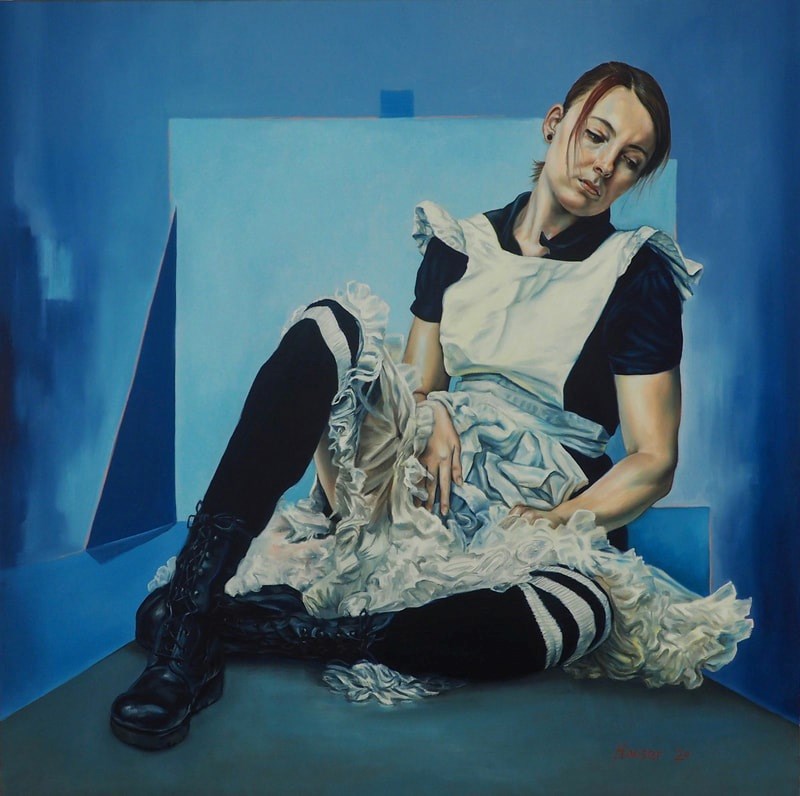ESTEVAN - The Estevan Art Gallery and Museum has two new exhibits that are available for people to view.
Spectrum by Iris Hauser, and Rogue Royal: Infanta by Grant McConnell, have been on display since Sept. 10, and will remain until Nov. 5.
In her artist’s statement, Hauser, who hails from Saskatoon, said that like most artists, she has been influenced by a broad spectrum of art as a figurative painter.
In this exhibition, she has assembled a range of work that begins with classically influenced narrative paintings, and then gradually progresses through a series of figure and ground explorations.
“My work has always circled around three elements: the human figure, the narrative and the study of formal elements, the painter’s building blocks of colour, shape and composition. Three interrelated bodies of work bring these three obsessions into focus,” she said in her statement.
Hauser has been working towards an exhibition of narrative paintings for a long time, but she struggled to find a title that captures the essence of what she is trying to do. Recently she stumbled across a poem by Marianne Moore, in which Moore described the necessity for a good poet to be “a literalist of the imagination;” in other words, to paint a picture with details that breathe life into the narrative.
“In this series the flexible feminine form is folded into a compact, complex structure of limbs and drapery. The figures function on multiple levels; the poses present individual personality in gesture and posture, but also reveal cultural strictures and explore the changing landscape of the feminine,” she wrote.
“The titles are all articles of clothing, representing the aspect of presentation that is so important in the subtle subjugation and colonization of the feminine.”
The solitary figures are seated on the ground as a symbolic representation of women connected to the Earth.
The ground on which these classically painted figures recline begins with a simple evocation of floor and walls, which gradually yields to a variety of spaces shifting from realism to abstraction, incorporating elements of Klimt, Gerhardt Richter, Lyonel Feininger and Japanese ink drawings.
The figures in Spectrum draped across an abstract plane act as formal elements, shapes and colours floating in space.
“The transition from the primarily narrative paintings to the abstract represents my personal voyage of discovery through art history. Each of these three groups could stand alone in an exhibition, but I believe that together they illuminate the evolution of my thought processes through a long and idiosyncratic career.”
McConnell, who also lives in Saskatoon, is known primarily for his paintings, which are derived from an ongoing investigation of subject matter related to Canadian social and historical themes. The artwork varies in approach, from the more meditative through to those which engage political concerns of the day.
A statement on the EAGM’s website says McConnell’s exhibition of paintings and drawings takes royal personages gone rogue as its subject (as seen through European oil painting), or as Canadians might say, off the grid.
The works are derived from an ongoing investigation of the Spanish Baroque artist, Diego Velazquez, as read into the Canadian historical circumstance.
“Canada, in all of its crude beauty and conflicted past, becomes the new ground to these royal figures,” the statement says.
In the Estevan installation, the focus is on the daughter of the King Phillip IV of Spain, who reigned from 1621-1665, the Infanta Margaret Theresa. She is the central figure in the composition of the painting Las Meninas. As she is key to the representation of the Spanish court in Velazquez’s work, the Infanta becomes the pivot point for varied expressions and interpretations here.







